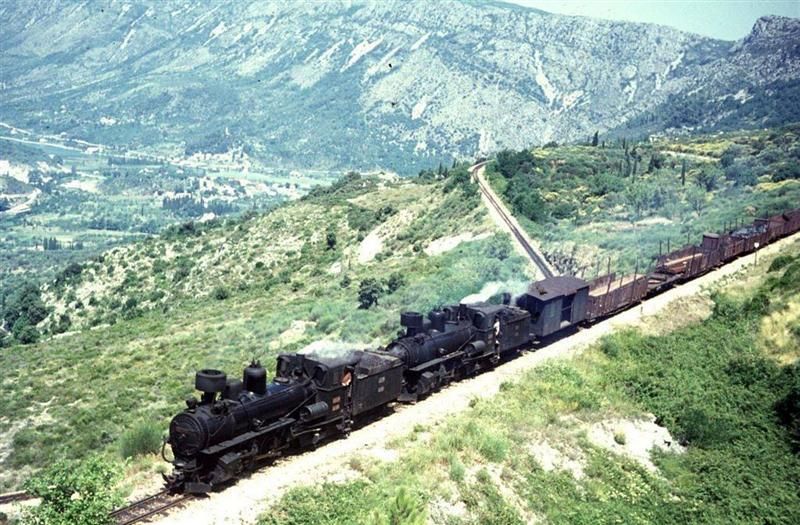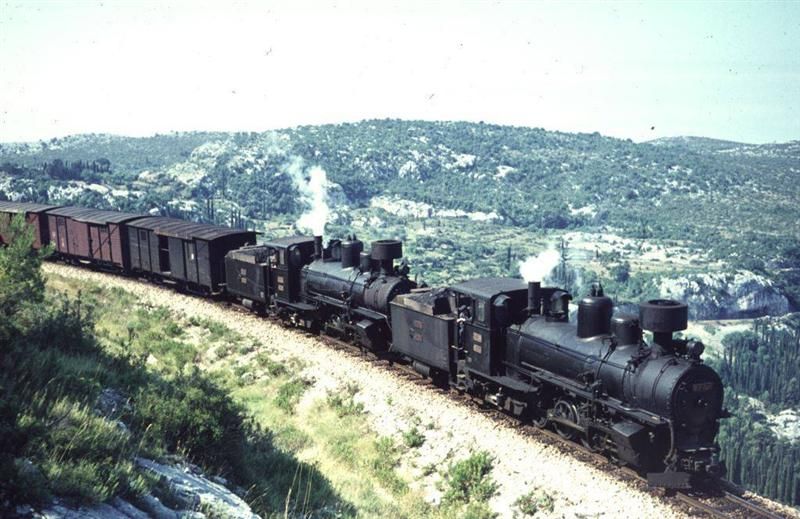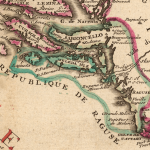Ever wondered about getting the train to Dubrovnik? You’re a bit late, unless you’ve got a time machine…
We at TCN are always trying to bring you the quickest, most cost effective, most scenic and most enjoyable tips and tricks when it comes to commuting across this beautiful country. Whether it’s heading from Zagreb to Split, from Split to Dubrovnik or indeed from various points in the country to pay a visit to our nearest neighbours, such as Bosnia and Herzegovina, Montenegro, Hungary, and Slovenia, not to mention countries a little further afield such as Albania.
Whether it’s by air, by sea, by road or by, well, that’s about all of your options… we’re always trying our best to give you the best advice, border queues or no border queues. With that being said, there are some slightly more tricky places when it comes to ground access, and the wildly popular Dubrovnik, Croatia’s longstanding tourism Mecca and Dalmatia’s southernmost city, is one of those must see destinations that isn’t as easy to reach as it might seem at first glance when the planes start flying in. But, when Dubrovnik’s barely comprehensible popularity is taken into account, have you ever wondered why there’s no train?
Continental Croatia, which boasts some as yet hidden gems which are gradually being discovered by tourists from around the world, is fairly well connected train wise, as are the Dalmatian capital of Split and the Northern Adriatic city of Rijeka. The closest you can come to Dubrovnik by train is to Ploče, Opuzen and Metković. But what about the famous Pearl of the Adriatic? Meet Ćiro, long since retired…
Dubrovnik’s train once departed from the train station near the post office. The narrow-gauged (a mere 76cm long) track was used by the popular steam locomotive called Ćiro. There were once two trains for Dubrovnik, one in the morning at around 08:00, and another at night at about 22:00, if you needed it between those times, well… you were out of luck.
Back at the very beginning of the sixties, the train looked pretty modest to say the least, but in spite of that fact, Ćiro still boasted three individual classes. The original railway was in operation between 1901 and 1976, officially opened on July the 15th, 1901, from Gabela (Bosnia and Herzegovina) to Zelenika (Boka Kotorska, Montenegro) with branches between Uskoplje (Sarajevo) and Gruž (Port of Dubrovnik), as well as Hum and Trebinje in Bosnia and Herzegovina.
This old route was part of the former southern network of railways which the Austro-Hungarian Monarchy began to build back during the 19th century. These railways connected the Adriatic ports of Metković, Gruž (Dubrovnik), Zelenika (Boka Kotorska) and later, Ploče on the Neretva, with towns in the mountains of neighbouring Bosnia and Herzegovina.
The train itself was hardly a speedy way of travelling anywhere, with every little thing taking what would be considered to be a tremendous amount of time today. When the passengers had boarded and taken their seats, a smartly uniformed railman with a metal stick walked along the side of the train, giving each of the wheels a whack, listening to the echo and for the sound of any potential technical problem that should be addressed with a finely tuned ear before departure. When he had finished with his ”check up”, he’d give Ćiro the signal to let off some steam there at the station to set the pressure. Charming, absolutely, time efficient… not quite!
When all was finally ready, the whistle would blow and with the commanding wave of a baton, the train would depart for the south, down towards Dubrovnik.

When the train passed Jablanica, Bosnia and Herzegovina, it would come all the way down to the canyon of the Neretva River, and the track was located at the bottom of today’s Grabovica and Salakovac lakes, in an incredibly unusual natural environment, flanked by a crystal clear green river and rugged, high cliffs, it was a real pleasure for the eyes.
Still in Bosnia and Herzegovina, after Mostar, the train would extend to Gabela, and one leg would leave for Dubrovnik, while the other headed for Metkovic. The track then continued through Popovo field. Approaching Dubrovnik, Ćiro would eventually arrive to Brgat in Croatia, and Ivanica, in today’s Bosnia and Herzegovina. From this location, a magnificent view of the emerald island of Lokrum and the sparkling Adriatic sea could be enjoyed, and the track then divided, towards Dubrovnik and towards Zelenika in Boka Kotorska, in neighbouring Montenegro.
Ivanica, now a border crossing between Croatia and Bosnia and Herzegovina, was an unusual place, because as southern Herzegovina’s karst, barren and rugged landscape gradually appeared in front of the passengers, it resembled a town taken directly from the stories and old films of the American Wild West, something a bit like deserted cowboy towns in Texas in the minds of the people.
The journey from Ivanica down to Gruž in Dubrovnik was yet another spectacle in itself. On one side of the land lay Mount Srdj, topped by thick Mediterranean pine, towering over the City of Dubrovnik, and then the train would suddenly descend, and the smell of the salty sea and the abundant green cypress trees would fill the senses with the familiar, lively scent of summer. The train would slowly descend down to Rijeka Dubrovačka, before entering the Gruž railway station, signalling arrival in Dubrovnik to the passengers.

Back during Yugoslavia’s existence in the seventies, cuts were undertaken and the railroad network in Bosnia and Herzegovina and southern Dalmatia was eventually abolished as it simply wasn’t making enough money, with the exception of proven profitable routes, the railway was replaced with a standard railcar. On June the 1st, 1976, traffic was suspended on the line between Čapljina, Bosnia and Herzegovina, and Dubrovnik. Because of this, Dubrovnik became a port city without a railway line. Routes connecting Uskoplje, Bosnia and Herzegovina, Heceg Novi, Montenegro, and Zelenika, Montenegro, were also abolished by the time 1968 rolled around.
Since the railroad itself, although long since used, has been here since 1901, it naturally makes up a significant part of the cultural and historical heritage of the region, boasting huge potential as a profitable tourist attraction.
Some of Ćiro’s old, well-used tracks remain to this very day at the bottom of newly-created lakes, and above the Sarajevo-Ploče highway (which is of course no longer used) the tracks are still elevated, and, as mentioned, Dubrovnik can sadly no longer be reached by train.
Good old Ćiro, while slow and, well, rather modest to say the least, remains only in memory and in photography, immortalising long-gone times during which you could arrive to Dubrovnik at an incredibly frustrating speed of just 40km an hour, and yet… it was still such a pleasant way to travel for very many.
SOURCE: tportal, Zamaslina, Ciro the Train – Povijest vlaka









